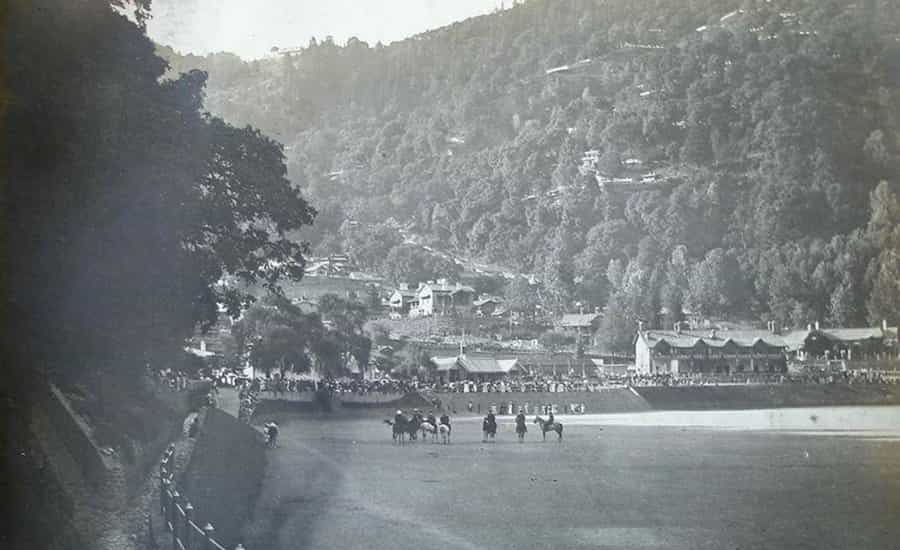History of Nainital
Nainital, a charming hill station nestled in the Kumaon region of Uttarakhand, India, has a rich and captivating history that spans centuries. The town’s name is derived from the Naini Lake, a prominent feature that has played a central role in its development. The history of Nainital is a tale of British colonial influence, natural beauty, and cultural evolution.

Early History
The origins of Nainital can be traced back to ancient times, with references to the region found in Hindu mythology. According to local legends, Nainital is one of the 64 ‘Shakti Peeths,’ where parts of the charred body of Sati (Lord Shiva’s wife) fell. The Naina Devi Temple, situated on the northern shore of Naini Lake, is believed to be the spot where the goddess’s eyes (naina) fell, giving the town its name.
Despite these ancient roots, Nainital remained a relatively obscure region until the British discovered its scenic beauty in the 19th century during the colonial era.
Colonial Era
The British influence in Nainital began in 1841 when P. Barron, a sugar trader from Shahjahanpur, stumbled upon the captivating Naini Lake. Mesmerized by the surroundings, he decided to build a European settlement, marking the inception of Nainital as a hill station. The British recognized its potential as a summer retreat to escape the scorching heat of the plains.
The construction of a European-style residence, Pilgrim Lodge, by Barron attracted other settlers. Soon, Nainital became a favored destination for the British, leading to the establishment of schools, churches, and other colonial structures. The allure of the hill station spread, drawing attention from prominent figures of the time.
The year 1858 marked a significant event in Nainital’s history when it became the summer capital of the United Provinces (now Uttarakhand and Uttar Pradesh). This administrative shift brought further development and attention to the town.
Development and Institutions
As Nainital continued to flourish, several institutions were established, contributing to the town’s cultural and educational development. In 1856, St. Joseph’s College, one of the oldest schools in North India, was founded by French priests. It became a prominent educational institution, attracting students from various parts of the country.
In 1878, the first English medium school for girls, Abbotsford School (later renamed Sherwood College), was established. These institutions played a pivotal role in shaping Nainital’s identity as an educational hub.
The Victorian architecture of the buildings in Nainital reflects the colonial influence, with structures like the Raj Bhavan, the High Court, and the Assembly Hall adding to the town’s historical charm.
Cultural Evolution
Nainital’s cultural evolution is deeply intertwined with the diverse communities that have called it home. The town is home to a mix of Kumaoni and Garhwali cultures, and their traditional art, dance, and music have enriched Nainital’s cultural landscape.
The Nanda Devi Festival, celebrated annually, is a significant cultural event that draws locals and tourists alike. It honors the goddess Nanda Devi and showcases the vibrant traditions of the region.
The Mall Road, a popular promenade in Nainital, has been witness to cultural exchanges and social gatherings for decades. The influx of tourists, both Indian and foreign, has contributed to a cosmopolitan atmosphere, making Nainital a melting pot of cultures.
Natural Attractions
The natural beauty of Nainital, with its pristine lakes and lush hills, has been a major draw for tourists. The Naini Lake, surrounded by hills on all sides, remains the focal point of the town. The tall Naina Peak offers panoramic views of the Himalayas and the surrounding valleys.
Other attractions, such as Snow View Point, Tiffin Top, and Bhimtal, contribute to Nainital’s popularity as a tourist destination. The surrounding forests are rich in flora and fauna, adding to the ecological significance of the region.
Post-Independence Era
After India gained independence in 1947, Nainital continued to be a popular destination for tourists seeking respite from the plains. The town’s infrastructure expanded, and efforts were made to preserve its natural beauty while accommodating the growing number of visitors.
Nainital’s educational institutions continued to thrive, attracting students not only from the surrounding regions but also from across the country. The town maintained its status as an educational and cultural hub.
Challenges and Conservation
In recent years, Nainital has faced challenges related to environmental degradation and unplanned urbanization. Increased tourism has put pressure on the fragile ecosystem, leading to concerns about the sustainability of the town’s development.
Efforts have been made to address these issues through conservation initiatives and sustainable development practices. Community-led projects, supported by government and non-governmental organizations, aim to preserve the natural beauty of Nainital while promoting responsible tourism.
Conclusion
Nainital’s history is a tapestry woven with threads of mythology, colonial influence, cultural diversity, and natural splendor. From its humble beginnings as a hidden gem in the Himalayas to its emergence as a popular hill station, Nainital has evolved while retaining its unique identity.
The town’s journey reflects the intersection of tradition and modernity, with its ancient temples coexisting with Victorian-era architecture. Nainital’s role as an educational and cultural center has added depth to its character, making it not just a tourist destination but a place with a rich and dynamic history that continues to unfold with each passing year.
Also Read:






